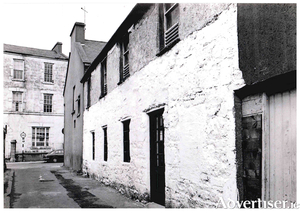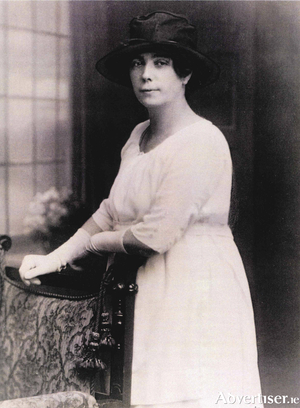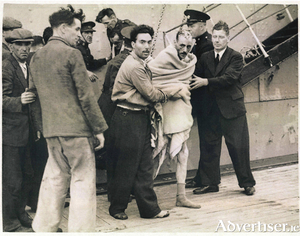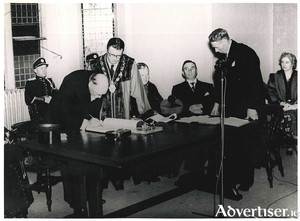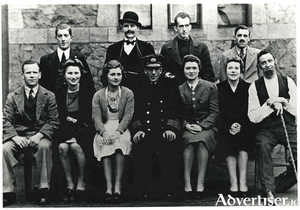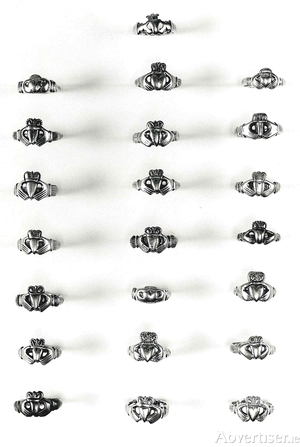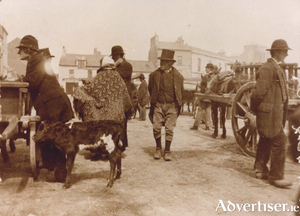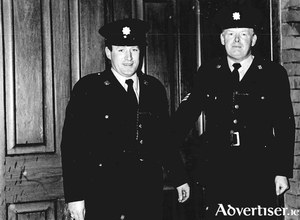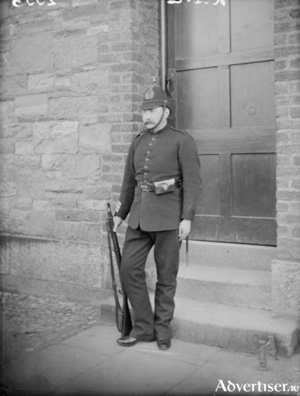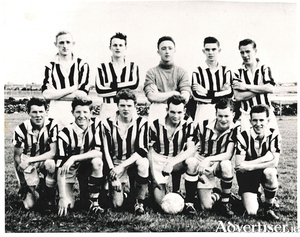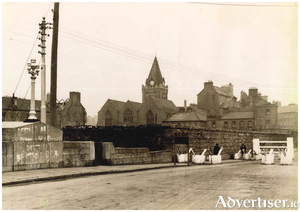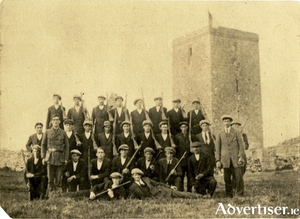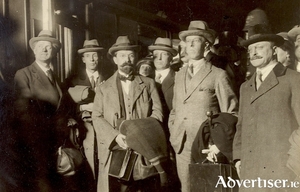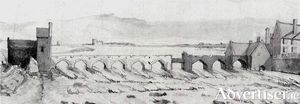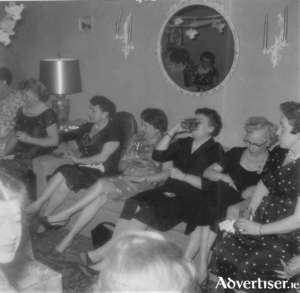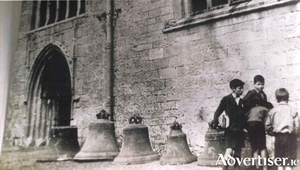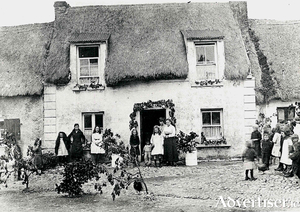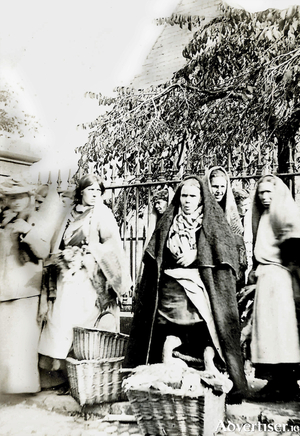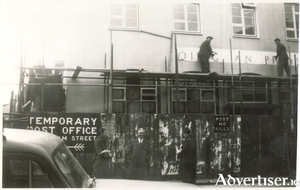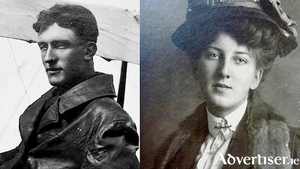From Crooked Lane to Church Lane
Thu, Mar 31, 2022
On a 1625 map of the city, this lane is referred to as ‘Crooked Lane’ and a little later in that century, it was commonly known as ‘Céim Cam’. In 1708 it was referred to as ‘Church Lane’ and on two documents dated 1824 it is down as ‘Bohercranmore’ (the Lane of the Big Tree) and also as Church Lane, sometimes called Lána an Teampaill. During the last century it was locally known as ‘O’Gorman’s Lane.
Read more ...Nora Barnacle
Thu, Mar 24, 2022
Nora Barnacle was born on the night of March 21/22 1884 in the maternity ward of the workhouse, part of which served as a hospital. At the time her family were living in Raleigh Row. Her parents were Thomas Barnacle, an illiterate itinerant baker whose heavy drinking kept the family in poverty, and Annie Healy, a member of a family of substance who believed in education and hard work. They married in 1881 and for the next 26 years, led a nomadic life as they moved from tenement to tenement almost with the birth of each child. They had eight children in all, one of whom, John Patrick, died in infancy.
Read more ...The day the war came to Galway
Wed, Mar 16, 2022
On September 3, 1939 at 11am, many Galwegians listened to the British prime minister’s broadcast declaring war on Germany. Very early the following morning, the following dramatic radio message came through to the Harbour Office. “Norwegian Motor Vessel Knute Nelson picked up 450 shipwrecked people, proceeding Galway. Due tomorrow morning, Tuesday 5th. Please arrange tender for landing same. Also notify pilot on Aran Islands. Please have medical supplies ready, From Master, September 4th”.
Read more ...Galway’s first Freeman
Thu, Mar 10, 2022
On August 31, 1939, Dr Douglas Hyde, President of Ireland, signed his name in Irish in a small leather-bound book as the first Freeman of Galway.
Read more ...The Penny Dinners
Thu, Mar 03, 2022
The Penny Dinners committee was a name given to a voluntary group who used to provide free dinners for 40 to 80 impoverished children four times per week in the late 1920s and early 1930s. In fact the title was a misnomer, in no sense were they penny dinners. The children could not afford to give a penny for them, nor could the committee provide a dinner for a penny. The funding for these meals came from the people of Galway and also from fundraising productions they put on, mostly in the Columban Hall.
Read more ...The Claddagh ring
Thu, Feb 24, 2022
The story of the Claddagh ring, which is made up of a plain hoop attached to a hammered or cast bezel designed as two hands clasping a crowned heart, has so much folklore and myth attached to it that it is hard to know where legend ends and truth begins. The motif of clasped hands is usually referred to as a ‘fede’ or ‘hands in faith’ ring and has been used on love rings since Roman times. The heart, regarded by lovers as the seal of affection, made an appearance on rings at a later date, as did the crown which is the distinguishing feature of the Claddagh Ring from all the others.
Read more ...A fair day in Eyre Square, c1885
Thu, Feb 17, 2022
Two hundred years ago, cattle fairs were held regularly at Fairhill in the Claddagh, then later in the century they moved over to Eyre Square where they often spilled over into adjoining streets like Williamsgate Street and Forster Street. They took place in the Square for a long time until they were moved to the Fairgreen.
Read more ...An Garda Síochána, the early years in Galway
Thu, Feb 10, 2022
After the truce, the RIC handed over its barracks to the Irish Free State. One hundred years ago this month, the Government set up An Garda Síochána, an unarmed civic police force. Unfortunately, the first group of gardaí who arrived in Galway by train had no barracks to go to, the Eglinton Street headquarters having been destroyed in an arson attack. A search began for some place to house the 23 gardaí and that evening, they managed to find accommodation in the County Club. They stayed there for almost a year.
Read more ...The RIC in Galway
Thu, Feb 03, 2022
In the 18th century, attempts at maintaining law and order in Galway were poor. Occasional groups of civilian vigilantes were set up, but they were not very successful. Then, 200 years ago, in 1822, the Chief Secretary Henry Goulburn set up the Irish Constabulary. In 1824, Edward Blake from Mary Street became the first Catholic in Ireland to become a constable. In 1825, a decision was made to bring police to Galway. Some time later a barracks was set up in Abbeygate Street, then one in Eyre Square (where Giblin’s Hotel was situated later), and one in Dominick Street where An Tobar Nua is today. The force gradually became very organized, was successful in dealing with crime, and so Queen Victoria granted it the term ‘Royal’.
Read more ...Soccer in Salthill
Thu, Jan 27, 2022
The game of soccer in Salthill really began with Christy Gilbert. He formed a club in the early 1940s called Salthill Crusaders and they played for several years with some success. Some of the players associated with the club were Harry Lupton, Donal Murray, Frank Lydon, Arthur Stephens, Brendan Collins, Tommy Stephens, Billy and Leo Shaw, and Donie Kelleher.
Read more ...O’Brien’s Bridge
Thu, Jan 20, 2022
The Parliamentary Gazetteer of Ireland was published in 1845 and stated that, “The old, or west bridge, over the main current of the Galway River, was built in 1342; and till the erection of the new bridge [the Salmon Weir Bridge, built 1819] was the only passage from the eastern districts of the county to the great peninsulated district of Iar-Connaught. In 1558, a gate and tower were erected at its west end; and afterwards, another gate and tower were erected in its centre; but these were long ago entirely demolished. About 42 years ago, the bridge was thoroughly repaired on its north side, and was pronounced by architects to be strong; but it soon experienced the effects of the neglect which are so generally apparent in the town; and in consequence of dilapidated parapets, narrow carriage-way and the utter want of side-pavements and of lights, it was, a few years ago, a rather hazardous means of crossing a deep and impetuous river on a dark night.”
Read more ...Ballad about Galway IRA man is revived and recorded
Tue, Jan 18, 2022
A century after it was composed, a ballad about a Galway IRA volunteer murdered by British Crown Forces during the War of Independence, has been formally performed and recorded.
Read more ...‘Was it wise to sign the Treaty?’
Thu, Jan 13, 2022
Was the Treaty the means that gave Ireland “the freedom to achieve freedom”, or was it a betrayal of the ideal that had been fought for since 1916 - an Irish Republic?
Read more ...The West Bridge, a brief history of the early years
Thu, Jan 13, 2022
The city of Galway was known in ancient times as ‘Streamstown’ because the Galway River divided into several small waterways in addition to the main river. The river was much more spread out then and was fordable in some places. The city was placed on the east side of the river, which acted as protection against the Irish families displaced by the Norman settlers who took over the area in the early 13th century. The walls of the city provided protection on the east and north side of the city and the various gates allowed access. The river was a barrier to trade with Iar-Chonnacht and so the merchant families began to feel the need to build a bridge to help expand trade, it would provide access to customers from the west, and also allow them to bring in their produce, fruit, vegetables, meat, hay, etc, to the various markets in town.
Read more ...Nollaig na mBan
Thu, Jan 06, 2022
Owing to liturgical differences, the Churches of the Eastern Roman Empire celebrated Christmas Day on January 6 while those in the Western Roman Empire Churches did so on December 25. In October, 1582, Pope Gregory XIII introduced the Gregorian calendar as a correction to the Julian calendar, which meant Christmas Day was now celebrated on December 25, and “Old Christmas” on January 6, the Feast of the Epiphany. This feast day celebrates the manifestation of the Son of God on earth, and also marks the end of the 12 days of Christmas.
Read more ...The bells of St Nicholas
Thu, Dec 30, 2021
There are 10 bells in St Nicholas’ Collegiate Church, cast at seven different dates from 1590 to 1898. They were hung for ringing by Mr HS Persse when he gave two new bells in 1891. After some time it was seen that the vibration was putting a great stress on the old tower and ‘chiming’ was substituted for ‘ringing’. Unfortunately the method of chiming was not satisfactory and one after another of the bells cracked, until, in 1930, only three of the bells could be used, the Clock Bell being only used for the hour’s strike and the Clifton bell being out of tune.
Read more ...A Claddagh Christmas long ago
Thu, Dec 23, 2021
These were the memories of Christmas in the Claddagh long ago as recalled by Martin Geary of Father Griffin Road and published in this paper in 1979.
Read more ...The joyful chaos of the Christmas market
Thu, Dec 16, 2021
For many people, the Christmas market takes place in Eyre Square and involves a big wheel, hurdy-gurdies and German beer tents. For others, it is part of a Galway tradition that goes back some 800 years under the shadow of the old grey St. Nicholas’ Collegiate Church. This was the fruit and vegetable market which expanded greatly at this time of the year with the big influx of turkeys and geese for sale.
Read more ...Some aspects of Galway postal history
Thu, Dec 09, 2021
The idea for regular stages for carrying letters is as old as history itself. The regular use of the words “post” and “litir” in 15th century Irish manuscripts suggests that by that time a postal system was already in existence here.
Read more ...The Auxiliary, his lover, and a murder trial
Thu, Dec 09, 2021
A Galway made programme about Hori Morse, a member of the most feared killing machine the British unleashed in Ireland during the War of Independence - the Auxiliaries - is to be shown on TG4.
Read more ...